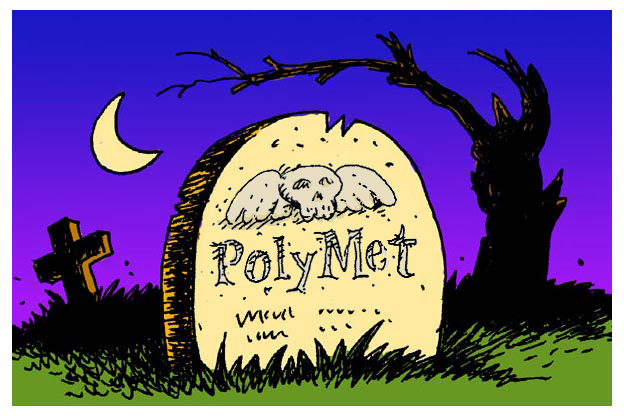
Those darn kids are just in over their heads
Several teams of management students at the Carlson School at the University of Minnesota studied an ethical problem, and wrote papers about it for a competition; the winners concluded:
An award-winning paper written by University of Minnesota students for a business ethics class argues that PolyMet Mining should not be allowed to proceed with its proposed copper-nickel mine in northeastern Minnesota at this time.
PolyMet’s response?
Bruce Richardson, a PolyMet executive, commended the students for their effort but said in an interview that they were in over their heads.
Why, there’s a 2,200 page SEIS that lays it all out.
And kids, get off our damn lawn!
Richardson is wrong; the SEIS is incomplete and the EPA expressed several environmental concerns; it also fails to address in any substantive way one of the really big issues: financial assurances by the mining company. Lee Schafer, business writer sidekick of Neal St. Anthony (the writer of the story about the Carlson students) wrote about that, too.
A quote from the Neal St. Anthony piece:
“One of our problems in business and politics is that we focus too much on where we stand on an issue and too little time on understanding the issue,” [Professor Jeffrey] Kaufmann said. “As [student] Kevin Hyde was saying … the [winning] group’s collective gut started with the idea that the PolyMet proposal was ethical. It changed as they focused on understanding the issues and the claims.”
For PolyMet, this is the regrettable outcome when the public actually pays substantive attention to what it proposes.
Here’s a little more:
The mine could reap an estimated $10 billion in revenue over 20 years. However, the winning essay found that the economic gains could be offset by environmental damage from mine drainage, sulfuric acid and toxic metals, in addition to a decrease in lake home real estate values that could follow these hazards.
“Similar sulfide mines all across the world have yielded severe and long-lasting contamination in the area around the mines,” the essay reported. “PolyMet’s proposed mine, however, is an even larger concern than past mines because the mine and processing facility would be located on the St. Louis River basin,” which connects miles of wetlands, floodplains and lakes in the region.
The student essay raised concerns about PolyMet’s commitment to environmental containment and remediation, given the history of a mining industry [and a principal shareholder with an abysmal environmental record] that often has left messes to be cleaned up at taxpayer expense.
The students have undoubtedly learned about externalities: true but indirect costs of an enterprise that it tries to make somebody else pay for.
To me, the generational aspect of this story is its most compelling one. Because, you see, the students — or maybe their children and perhaps generations of children — are going to be the ones left to polish PolyMet’s tombstone. The kids get it.
Thanks for your feedback. If we like what you have to say, it may appear in a future post of reader reactions.


